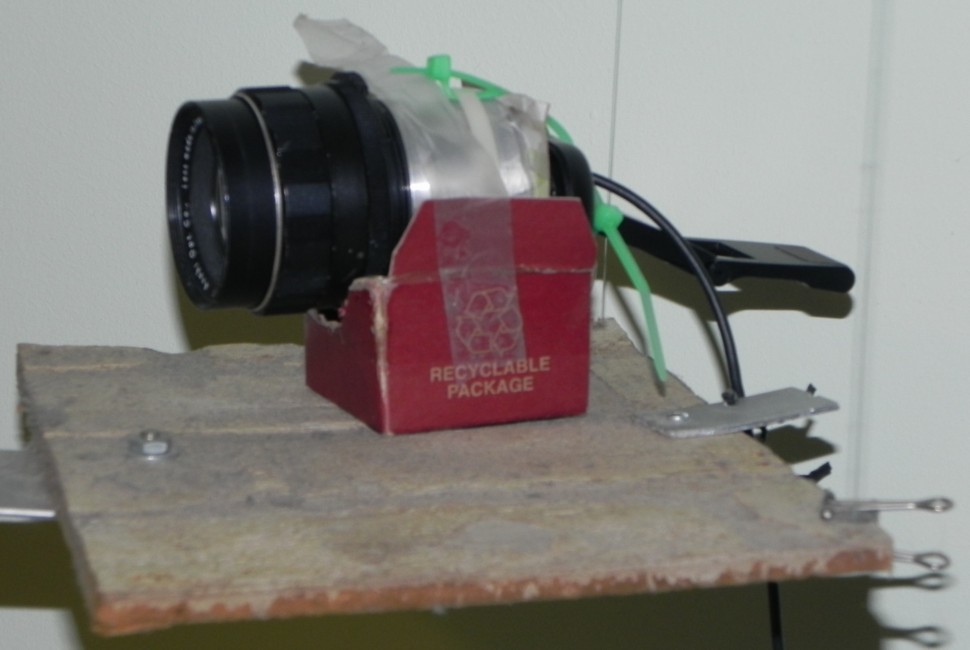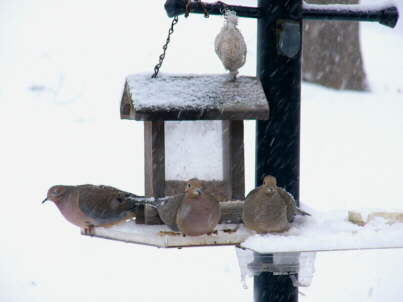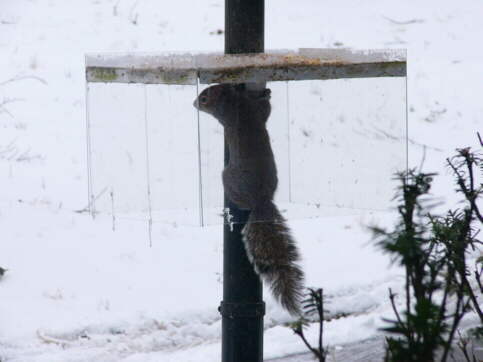Home Page | BirdCam | Bird Index
About Birdcam

The RCM-8164 seemed to display in monochrome, I don't know why. All I had done was remove its lens. So in July 2021 I took the Logitech webcam I'd been using for Zoom (bought another webcam for zooming), removed its lens, and attached it to the 55mm camera lens I had been using. Its field of view is more magnified than its predecessor, however. Not sure if that is good or bad. As always, it is difficult to keep it focussed clearly.


I was dissatisfied with the circular visual field and even more unhappy with the image quality through the binoculars. So in March 2013, I managed to disassemble (destroy) the RCM-8164 webcam and extract the circuit board (containing the imager). With the webcam lens removed, I mounted the board behind a 100mm screw-in lens I used to use with an old Pentax SLR camera. Lucky I had a macro extension sleeve; so with a little cardboard and scotch tape, it wasn't too hard to attach the imager to the lens. The focal length adjustment on the lens works fine, but it still is kind of tough to focus using the hanging string assembly. Also, this lens zooms in fairly high making it harder to maintain a stable image while adjusting the focus. It's not as sharp as I'd like it to be -- I'm guessing it has something to do with the magnification (plus it's looking through a window/storm window at an angle). I might try using a 55mm lens instead which will probably show the whole feeder in the view (yes, that's what is there now!).
The Birdcam was an Aiptek Pencam Trio VGA attached via a USB cable, looking out the window from the computer room. When I switched from XP to Win7 in April 2010 the drivers wouldn't work, so it's retired now and replaced with a Rosewill RCM-8164. Suspended from the ceiling, used alone the view is like this:

Which obviously doesn't work too well. So it has a pair of 10x32 binoculars in front of it, nothing very high tech:

Prior to April 2010, I was using a pair of 7x35 binoculars.
Software: Currently the video streaming server is Yawcam. It also serves up still images like its predecessor. From March 2002 to April 2010, I used Webcam2000 which served up an image at a time.
The Bird Feeders

The Main Feeder contains black oil sunflower seed, with four perches and a tray. It holds about 25 lbs., which lasts 6-8 weeks. The perches are used mostly by chickadees, titmice, finches, downy woodpeckers, and nuthatches. They are sloppy and some seeds fall onto the tray below, which is mostly used by cardinals (in the photo), doves, juncos, and finches.
The bottom section sometimes contains suet, which is mostly used by downy woodpeckers and red bellied woodpeckers (in the photo), though nuthatches and wrens visit it as well.
The razor wire draped around the dogwood tree discourages the squirrels from jumping onto the tray. In 2014 I removed all of the razor wire and instead put a few plexiglas panels on the tree. The squirrels can gaze longingly at the feeder through the panels, but cannot get around it to jump onto the tray. The feeder's roof overhangs the tray so squirrels cannot drop off the top to it -- they must jump across from the tree. The tray is mounted on a pulley, using the bottom section (filled with aquarium rocks) to just balance its weight. Squirrels jumping onto the tray weigh much too much, and immediately fall off. The tray edges are spring loaded so squirrels can't grab onto them, either. The geometry of the feeder top section is such that there is nothing for squirrels to grab onto.
A more detailed description of the Main Feeder, along with additional photos and construction details is here.
More pictures and videos of all feeders are here.





The Post Feeder surrounds the lamp post which prevents
the squirrels from climbing up the post onto the tray. Mixed feed is in
the birdhouse shaped feeder and spread around the tray, and nyger thistle
is in the separate compartment on the right. Used mostly by juncos,
sparrows, doves, and bluejays.


Still, some squirrels figured out how to catapault themselves underneath from the post onto the shelf. The latest incarnation extends the sides, which does successfully prevent them from reaching it.
A more detailed description of the Post Feeder along with construction details is here.
 The
hummingbird feeder
The
hummingbird feeder
All Three Feeders

This webpage last updated: August 13, 2021
All content Copyright
2025. Non-commercial use permitted at no charge, provided that:
(1) credit is attributed to Birdcam.ICengineering.com; and (2)
is made of such usage.